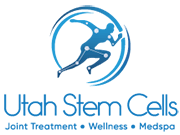Mesenchymal stem cells from umbilical cord are considered to be universal donor cells because they are not immediately recognized as foreign. The cells home to damaged tissue and are known to secrete molecules called trophic factors.
Trophic factors from mesenchymal stem cells are known to stimulate repair of damaged nervous tissue in both the brain and the spinal cord. Some of these are neurotrophic factors that promote neuronal growth, induce new blood vessel growth, neurogenesis and astroglial activation, encourage synaptic connection and axonal remyelination, decrease programed cell death, and regulate microglial activation.1
Mesenchymal stem cells stimulate brain repair after stroke1 and traumatic brain injury.2,3,4
Animal studies show that mesenchymal stem cell can migrate into the brain and survive.5,6,7
Because we utilize allogeneic cord tissue-derived mesenchymal stem cells, we are able to offer treatment to any qualified patient, not just those who saved their own cord blood at birth. We will discuss several additional advantages of allogeneic cord-derived stem cells below.
There is evidence to support that bone marrow-derived mononuclear cells are safe and improve the quality of life in children with neurological disorders including cerebral palsy.8
A recent study using umbilical cord tissue-derived mesenchymal stem cells to treat cerebral palsy found no serious adverse side effects. Improvements were observed, especially in functional scales except for the Tardieu Scale9.
Through administration of mesenchymal stem cells, we have observed improvements in cerebral palsy patients treated at our facilities.

